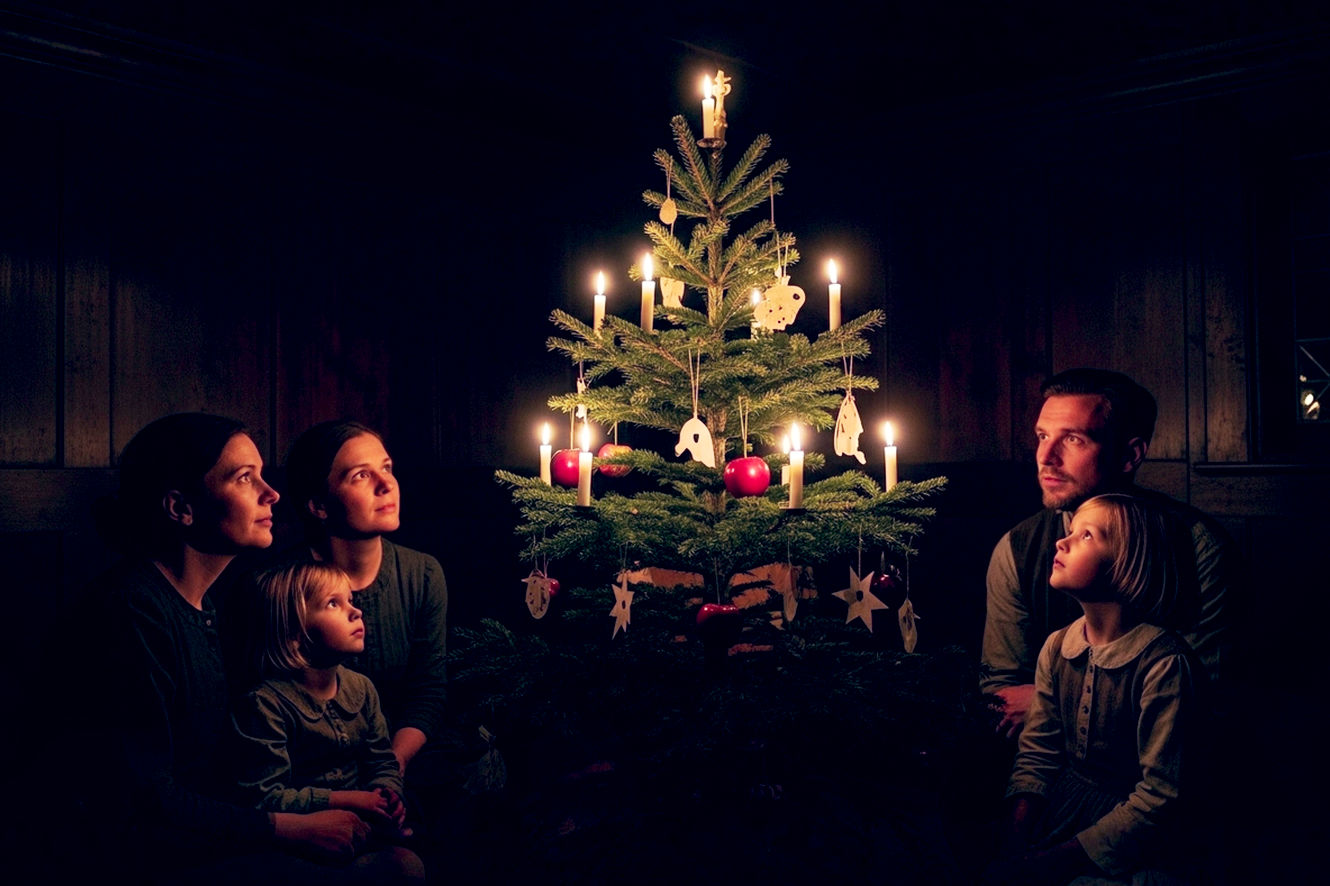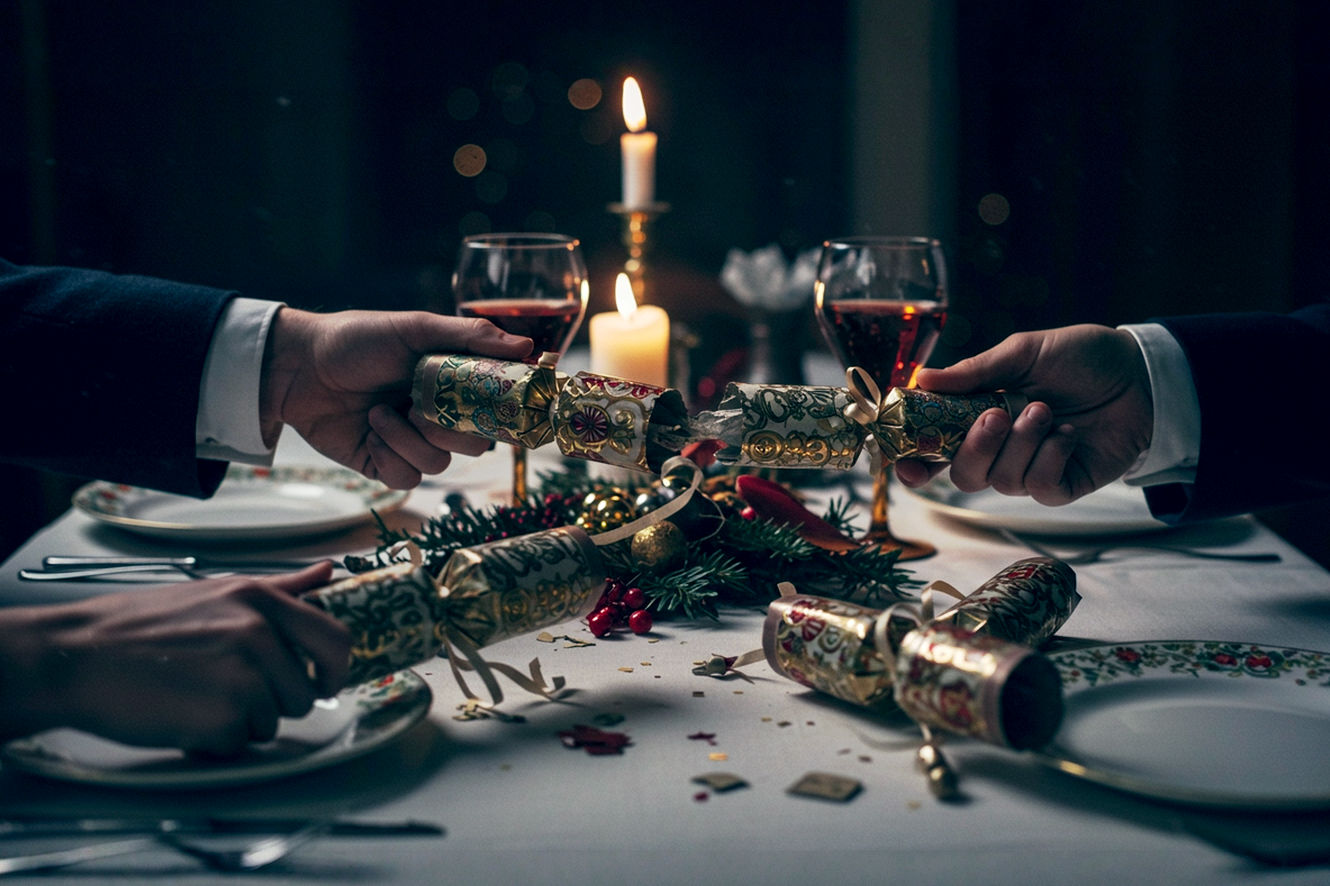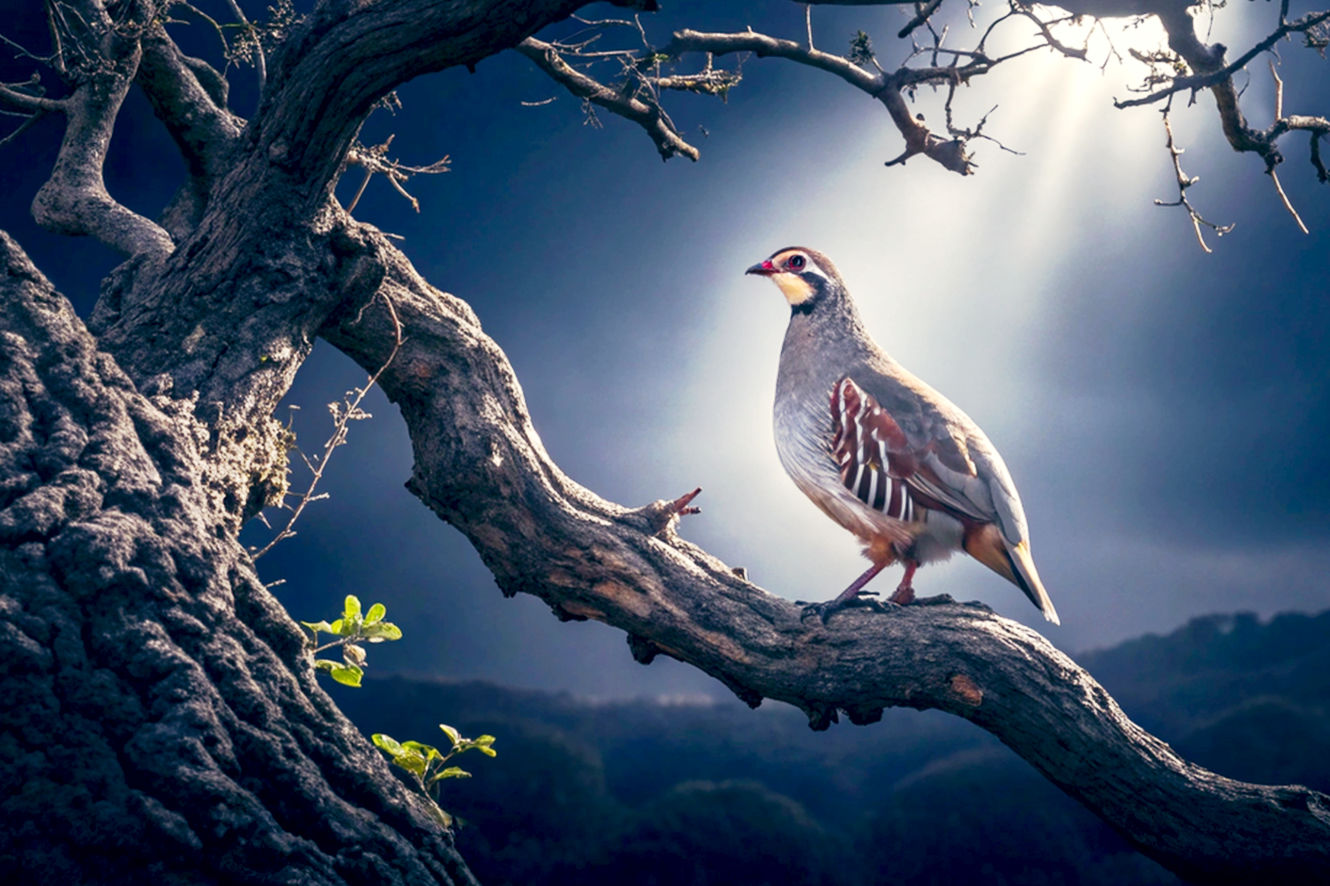This post may contain affiliate links. If you make a purchase through these links, we may earn a commission at no additional cost to you.
Imagine a Christmas tree, its branches filled with the warm glow of twinkling lights. Nestled among the familiar glass baubles and shimmering tinsel, you spot a tiny, hand-painted Abraham Lincoln, his expression as thoughtful and resolute as it is in the grand marble of his memorial. A little further down, a delicate glass effigy of Queen Elizabeth I, complete with a miniature ruff collar, hangs beside a porcelain Albert Einstein, his wild hair perfectly captured.
These aren’t just festive trinkets. They’re miniature monuments, tangible pieces of history that connect us to the titans of the past. The world of historical figure ornaments is a rich and fascinating hobby that blends artistry, history, and the deeply personal act of memory-keeping.
It’s a universe where a single, fragile object can tell a story of craftsmanship from 19th-century Germany, the patriotic fervor of a nation at war, or a family’s tradition of honoring a particular hero, scientist, or leader.
This guide is your definitive map to that universe. We’ll journey from the humble origins of the German Tannenbaum to the bustling modern collector’s market. We’ll uncover the stories behind the iconic brands that turned decorations into heirlooms and provide you with a practical field guide to starting, valuing, and preserving your own collection. Whether you’re a seasoned collector or simply curious about the ornament your grandmother always hung in a place of honor, you’re about to discover why these miniature figures carry such monumental significance.
The Roots of a Tradition: From German Tannenbaums to a Global Phenomenon
Before we can place a historical figure on a tree, we first need the tree itself. The tradition of bringing decorated evergreens indoors is most famously credited to 16th-century German Protestants, but the practice of decorating them with anything more than fruit and nuts took a few more centuries to catch on.
The Paradise Tree: The Pre-Ornament Era
The earliest direct ancestor of the Christmas tree was the “paradise tree.” In medieval Germany, religious plays depicting the story of Adam and Eve were a Christmas Eve staple. Since apple trees were bare in winter, actors used fir trees, decorating them with apples to represent the forbidden fruit and white wafers to symbolize Christian redemption. These simple, symbolic decorations were the first step toward the ornate trees we know today.
Lauscha, Germany: The Birthplace of the Glass Ornament
For the next evolution, we must travel to the small town of Lauscha in the German duchy of Saxe-Coburg. This region was the heart of German glassmaking. Legend has it that in the late 16th century, a poor glassblower named Hans Greiner couldn’t afford real apples and nuts to decorate his family’s tree, so he crafted glass replicas instead.
While a romantic tale, the historical consensus places the commercial production of glass ornaments, or kugels, in Lauscha around 1847. Early ornaments were blown into clay molds and then swirled with a silver nitrate solution (a technique developed in the 1830s) to give them a brilliant, reflective interior. These first ornaments were heavy, came in simple shapes like fruits and nuts, and were topped with a metal cap and loop for hanging.
Queen Victoria’s Royal Influence
So, how did a niche German tradition cross the Atlantic and become a global sensation? We have Queen Victoria and her German-born husband, Prince Albert, to thank.
In 1848, the Illustrated London News published a detailed engraving of the royal family gathered around their decorated Christmas tree at Windsor Castle. The image was a sensation. It depicted a charming domestic scene, with the Queen, Prince Albert, and their children admiring a tree laden with candles, sweets, and delicate ornaments imported from Albert’s homeland.
American magazines quickly republished the image (subtly altering Victoria’s crown and Albert’s mustache to look more “American”), and a trend was born. Suddenly, every family in Britain and the United States wanted a decorated tree just like the royals. This single image created a massive demand for German glass ornaments.
Early American Ornaments: A Mix of Homemade and Imported
By the 1880s, the five-and-dime store magnate F.W. Woolworth began importing German glass ornaments to the United States. He was initially skeptical, but his first order of $25 worth of ornaments sold out almost immediately. He had tapped into a cultural phenomenon.
Alongside these treasured German imports, families also crafted their own decorations. Elaborate paper ornaments, particularly those from Dresden, Germany, featured embossed and die-cut images of animals, angels, and Santas. Another popular style was the cotton batting ornament, where crafters would wrap cotton around a wire frame to create figures, often with printed paper faces glued on. It was in these paper and cotton creations that we see the first widespread, though generic, figurative ornaments taking shape.
The Dawn of the Figure: When Ornaments Gained a Face
The transition from general shapes to specific, recognizable people was a gradual one, driven by technological advances and seismic cultural shifts.
From Angels to Icons: The First Figurative Ornaments
Early glass molds were complex to create, so simple shapes dominated. However, as glassblowing techniques became more sophisticated, artisans in Lauscha and the surrounding regions began producing more intricate designs. Angels, cherubs, and of course, Saint Nicholas (or Santa Claus) were among the first popular figures. These weren’t historical figures yet, but they proved that the public had an appetite for ornaments with a face and a story.
World War I and a Surge in Patriotism
The outbreak of World War I in 1914 abruptly cut off the supply of German ornaments to the Allied nations. This disruption had two major effects. First, it forced American companies like Corning Glass Works to pivot their production from lightbulbs and lab equipment to Christmas ornaments, breaking the German monopoly.
Second, the war fueled a wave of patriotism that found its expression in decorations. While few specific examples of ornaments depicting named generals from this era survive en masse, the production of ornaments shaped like flags, eagles, and other national symbols soared. The idea of the Christmas tree as a reflection of national pride and identity began to take root.
The Mid-Century Shift: Plastic, Pop Culture, and Accessibility
After World War II, manufacturing boomed. New, cheaper materials like plastic made ornaments more accessible and durable than ever before. This was the era when pop culture icons began appearing on trees. Ornaments featuring Disney characters, comic book heroes, and television stars became common, paving the way for the public to accept recognizable, non-religious figures as standard holiday decor. The line between a Santa Claus ornament and a Davy Crockett ornament was beginning to blur.
The Golden Age of Collecting: Brands That Defined the Hobby
The 1970s marked a pivotal turning point. Ornaments transformed from disposable decorations into cherished, high-value collectibles, thanks in large part to a few visionary companies.
Hallmark Keepsake Ornaments: The Game-Changer
No company has had a greater impact on the ornament-collecting hobby than Hallmark.
In 1973, the greeting card giant launched its first collection of “Keepsake Ornaments”—six glass balls and twelve yarn figures. The concept was simple but revolutionary: create unique, dated ornaments each year so that families could commemorate special moments and build a collection that told their life story.
It was a runaway success. Hallmark quickly introduced the ideas that now define the market:
- Annual Series: They launched series like “Frosty Friends” and “Rocking Horse,” where a new, related ornament was released each year. This hooked collectors, who felt compelled to complete the set.
- Limited Editions: By producing a finite number of certain designs, they introduced scarcity and created a fervent secondary market.
- Artist Recognition: Hallmark began promoting its in-house artists, giving them bylines and creating a fan base for specific designers.
Hallmark was also a pioneer in historical figure ornaments. They’ve produced countless series dedicated to presidents, famous women, civil rights leaders, and pop culture icons. By packaging history in a beautifully crafted, limited-edition format, they made collecting historical figures a mainstream pursuit.
The White House Historical Association: A Presidential Tradition
In 1961, First Lady Jacqueline Kennedy founded the White House Historical Association, a non-profit dedicated to the preservation of the White House. To fund its work, the association began a tradition that has become a cornerstone of historical ornament collecting.
In 1981, they released their first official White House Christmas Ornament. Designed by a local artist, it was an angel in flight, inspired by the weather vane that George Washington had installed at Mount Vernon. Each year since, the association has released a new ornament honoring a specific president in chronological order or a significant White House anniversary.
What makes these ornaments so special?
- Authenticity and Mission: They are the official ornament, with proceeds supporting a historical cause.
- Exquisite Quality: Almost all ornaments are made in the USA from 24-karat gold-finished brass, giving them a distinctive, heirloom quality.
- Educational Value: Each ornament comes with a booklet explaining the historical context of its design, turning the decoration into a mini history lesson.
For collectors focused purely on American history, the White House Historical Association series is the gold standard.
Christopher Radko: Reviving European Craftsmanship
The story of Christopher Radko is a collector’s legend. In the early 1980s, his family’s 1,000+ piece collection of vintage European glass ornaments was destroyed when their tree stand broke. Devastated, Radko set out to recreate them. When he couldn’t find anything that matched the quality and charm of the originals, he decided to make them himself.
He traveled to Poland and enlisted the help of glassblowers who still used the traditional, centuries-old techniques. In 1986, he founded his company, and in doing so, single-handedly revived the art of European-style glass ornaments.
Radko ornaments are known for:
- Old-World Methods: Each one is mouth-blown, hand-lined with silver, and hand-painted by Polish artisans.
- Intricate Detail: From the folds in a president’s coat to the script on a historical document, the level of detail is extraordinary.
- Whimsical and Historical Blend: While famous for his Santas and snowmen, Radko has produced stunning collections of historical figures, including U.S. Presidents, British royalty, and characters from classic literature.
A Radko ornament is a piece of functional art, representing a direct link back to the glassblowers of Lauscha.
Other Notable Makers
While Hallmark, the WHHA, and Radko are the “big three,” other brands have made significant contributions. Polonaise is another Polish glass company known for high-artistry pieces. Kurt Adler has been a major importer and distributor of a wide range of ornaments, including historical figures, for decades.
A Collector’s Field Guide: Building and Managing Your Collection
Ready to start your own personal museum? Here’s the practical advice you need to navigate the world of historical ornament collecting.
Defining Your Niche: What Story Do You Want to Tell?
The sheer number of options can be overwhelming. The best way to start is by choosing a theme. A focused collection is often more satisfying and valuable than a random assortment. Consider themes like:
- U.S. Presidents: You could collect one ornament for each president or focus on a specific era.
- British Royalty: From the Tudors to the Windsors, a perennially popular subject.
- Scientists and Inventors: Honor the great minds like Einstein, Marie Curie, or Leonardo da Vinci.
- Military Heroes: Figures from the Revolutionary War, Civil War, or World War II.
- Artists and Writers: Collect miniature versions of Shakespeare, Frida Kahlo, or Mark Twain.
- A Single Maker: You might decide to collect only White House Historical Association ornaments or a specific Hallmark series.
How to Identify and Authenticate Historical Ornaments
Knowing what you have is the most important part of collecting.
The Maker’s Mark: A Collector’s Best Friend
Most reputable ornaments have a maker’s mark.
- Hallmark: Look for the Hallmark crown logo, the artist’s name, and the year. The copyright symbol © is often followed by the year of production.
- White House Historical Association: These are typically marked with “The White House Historical Association” and the year.
- Christopher Radko: Look for the signature star-shaped metal cap.
- German Glass: Antique German ornaments are harder to identify, but some may have paper caps with a maker’s name, though these are often lost to time.
Material Matters: Glass, Resin, Porcelain, or Plastic?
The material gives you clues about the ornament’s age and quality.
- Glass: Can range from delicate, thin-walled antique German glass to the sturdier glass of modern Radko or Hallmark pieces.
- Resin: A popular modern material that allows for very fine detail. Many Hallmark ornaments are made of resin.
- Porcelain: Often used for higher-end, commemorative pieces. It’s heavier and has a smoother finish than resin.
- Plastic: Common in mid-century, mass-produced ornaments. Lighter and more durable, but generally less valuable.
The Importance of Original Packaging
For modern collectibles (1970s-present), the original box is crucial. It can account for 50% or more of the ornament’s total value. A Mint in Box (MIB) ornament is the collector’s ideal. The box confirms authenticity and has protected the ornament from damage.
Determining Value: What Makes an Ornament Worthwhile?
The value of an ornament is determined by the classic collector’s trifecta: condition, rarity, and demand.
- Condition: Any chips, cracks, paint loss, or discoloration will significantly decrease value. For modern pieces, the condition of the box is just as important.
- Rarity: Was it a limited edition? A member-exclusive piece? An early piece from a now-famous series? The fewer there are, the more people will want them.
- Demand: Some historical figures are simply more popular than others. Ornaments of George Washington or Abraham Lincoln will almost always have a broader appeal than those of, say, Millard Fillmore. Pop culture crossovers (like a Star Trek captain ornament) can also drive high demand.
Where to Find Your Treasures: From Flea Markets to Online Auctions
- Online Marketplaces (eBay, Etsy): The largest selection by far. You can find almost anything, but you need to be a savvy shopper. Check seller ratings, examine photos carefully, and factor in shipping costs.
- Collector Clubs and Forums: A great place to connect with other enthusiasts, learn from experts, and trade or buy in a more trusted environment. The Hallmark Keepsake Ornament Club (KOC) is a prime example.
- Antique Stores and Flea Markets: The thrill of the hunt! You can find hidden gems here, often for a bargain. This is the best place to find vintage, pre-1970s ornaments that may not have their original boxes.
- Estate Sales: A fantastic source for finding entire collections at once.
The Curator’s Duty: How to Care For and Display Your Collection
These are fragile pieces of history. Treat them as such.
- Storage: The number one rule is acid-free materials. Store each ornament wrapped in acid-free tissue paper in a sturdy, climate-controlled box. The original packaging is often the best storage container. Avoid attics and basements where extreme temperature and humidity changes can cause damage.
- Cleaning: Use a very soft, dry brush (like a makeup brush or camera lens brush) to gently dust your ornaments. Never use water or cleaning solutions, as this can destroy delicate paint and finishes.
- Display: Use sturdy hooks and distribute the weight of heavy ornaments evenly on the tree. For year-round enjoyment, consider displaying your most prized pieces in a glass-fronted curio cabinet, away from direct sunlight.
The Enduring Legacy: Why We Cherish These Miniature Monuments
Why does this hobby endure? Why do we feel such a strong connection to these tiny figures?
A Tangible Link to the Past
In a digital world, historical ornaments offer a physical connection to the past. Holding a finely crafted ornament of a historical figure makes their story feel more immediate and real. It’s a way of inviting these great figures into our homes and our family traditions, making history a living, breathing part of our lives.
Family Heirlooms and Storytelling
Many collections are built over generations. Unpacking the ornaments each year becomes a ritual of remembrance. The story of “the year we got the Winston Churchill ornament” or “Grandma’s favorite Queen Victoria” is told and retold, weaving the ornament into the fabric of the family’s own history.
The Future of Historical Figure Ornaments
The tradition is still evolving. 3D printing is allowing for incredible customization, where a person could theoretically create an ornament of any historical figure they choose. Niche artisans on platforms like Etsy are creating figures of lesser-known but important historical people, expanding the pantheon beyond the usual presidents and kings. The desire to commemorate, to educate, and to own a small piece of history ensures that this hobby will continue to thrive for generations to come.
Conclusion: Your Own Personal Museum on a Tree
From a simple apple on a German paradise tree to a 24-karat gold-plated presidential seal, the journey of the historical figure ornament is a story of art, commerce, and culture. It reflects our changing tastes, our patriotic sentiments, and our deep-seated need to connect with the stories that define us.
To collect these ornaments is to become a curator of your own personal museum. Each piece you select adds to a narrative—whether it’s the story of the American presidency, the history of scientific discovery, or simply the story of your own family’s admiration for a particular hero. So the next time you decorate your tree, look a little closer. You might just find that the most powerful stories come in the smallest of packages.






